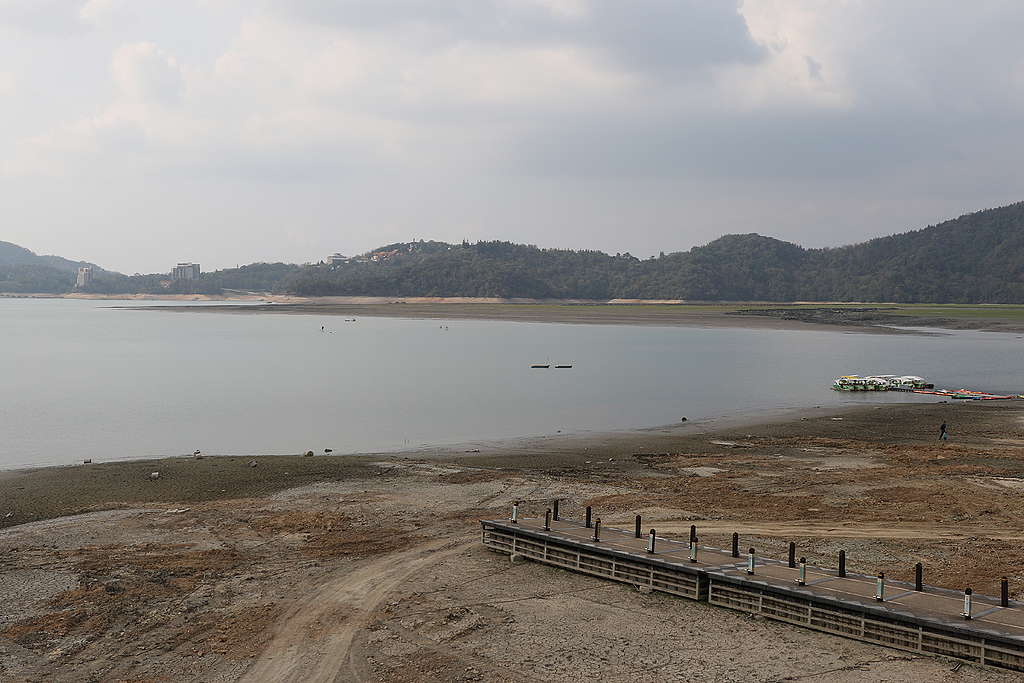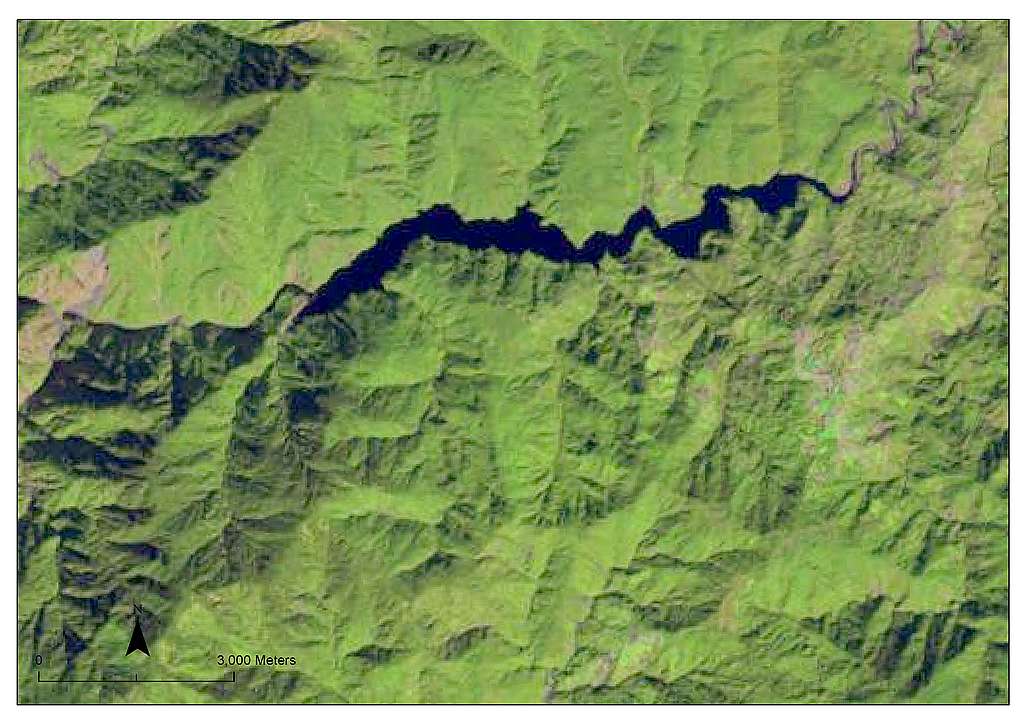In a normal year, water laps against the pilings of Ita Thao Pier, which offers tourists views of vast, blue Sun Moon Lake in central Taiwan.
But this year the pier stretches across an expanse of cracked mud, exposed by the lake’s record-low water level. Fishing nets and other debris are baked into the earth like fossils. When Greenpeace visited in late April, a handful of tourists wandered across the lakebed, taking photos of the barren landscape.

Taiwan, known for its waterfalls and lush mountains, is experiencing its worst drought in 56 years. The dry spell has persisted for 18 months, including a highly unusual summer in which zero typhoons made landfall on the island.
Impact on tourism
Vendors at Sun Moon Lake say the area’s tourism industry, already struggling due to COVID-19, has been further battered by the drought. As a result of water shortages, water supplies in the area near the lake are periodically cut off with little notice.

“Tourists have booked homestays, but homestay operators only became aware that the water would be cut off on that day. All they can do is send the guests away and absorb the financial loss themselves,” said one guesthouse owner.
Locals say that the boat tour business is suffering due to lack of water.
“There is a lot less water in the lake, so tourists aren’t interested in taking a boat tour, which has a serious impact on the boatmen’s businesses … Sun Moon Lake on weekdays really is deserted,” he said.

Record-setting drought
It isn’t just the famous Sun Moon Lake that has been impacted – across Taiwan reservoirs are drying up.
In Baoshan Second Reservoir, Hsinchu County, the volume of water had decreased 96.2% between March 12, 2019 and March 12, 2021. At Zeng-wen Reservoir in Chiayi County it decreased 81.1% over a two-year period, and at Techi Reservoir in Taichung it declined 73.3%, according to Greenpeace East Asia calculations.


Landsat images by the U.S. Geological Survey reveal changes in the Techi reservoir. The volume of water in the reservoir had decreased by 73.3% over a two-year period (February 1, 2019 – February 1, 2021).
Greenpeace activist Yu-Jun Lin visited Techi reservoir in April.
“There was no water left in the reservoir. If you didn’t have an old photo for reference, you would think it’s just a regular mountain landscape,” she said.
In Taichung, Taiwan’s second largest city, the government has shut off water taps two days per week.
Islandwide, local governments have reported tens of millions of dollars in agriculture losses. In high-elevation Nantou, where Sun Moon Lake is located, tea trees have shriveled up, and the harvest is expected to shrink by 20%.
A drier future for Taiwan
As climate change intensifies, scientists project that droughts in Taiwan will become increasingly common.
On the current trajectory, spring rain in Taiwan is on track to decrease 13.2% by mid-century, according to research from Academic Sinica.
Likewise, scientists say that the frequency of typhoons in Taiwan is decreasing as global temperatures rise. By the end of the century, the number of typhoons that reach Taiwan could be reduced by half, Dr. Huang-Hsiung Hsu, a climate researcher at Academia Sinica, told Reuters.
Climate Action in Taiwan
At present, more than 80% of Taiwan’s energy supply comes from fossil fuels, though the energy mix is slowly changing. Since 2016, Taiwan has seen a five-fold increase in solar-power capacity, and in 2019 the first offshore wind farm became operational.
However, the pace of transition is not nearly fast enough to address the intensifying climate emergency.
“Taiwan’s government must create a detailed timeline showing how we will reach net zero emissions before 2050. They also must implement an effective carbon pricing mechanism as soon as possible,” said Greenpeace East Asia campaigner Tracy Cheng.
“But the future of water availability in Taiwan also depends on whether we as a planet can cut down on emissions quickly enough. We have many better alternatives to coal, oil and gas, but really there is no replacement for water.”
Lena Chang is a Climate & Energy Campaigner and Erin Newport is a Communications Officer. Both work at Greenpeace East Asia.

It’s time for all of us to assert our rights, demand climate justice, and a dignified way of life.
Take action


